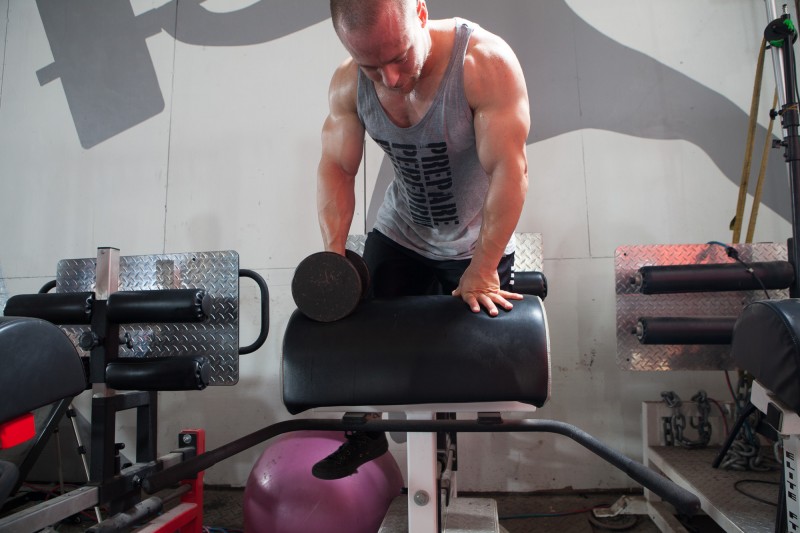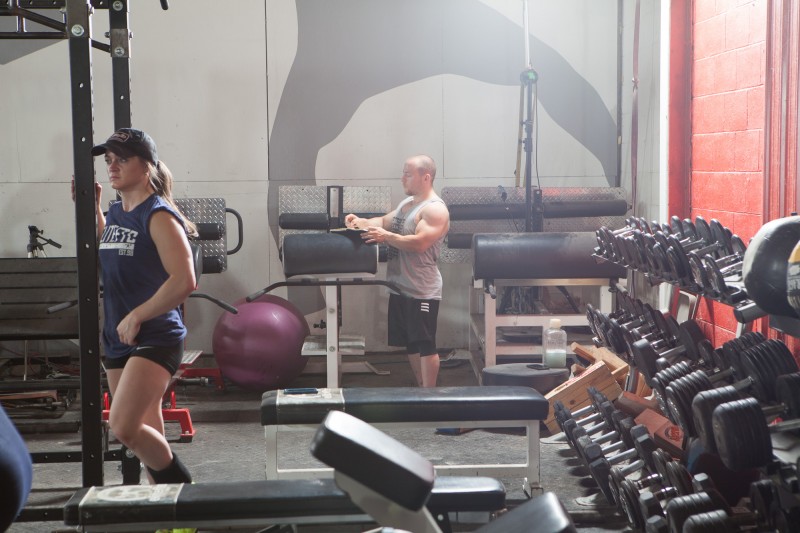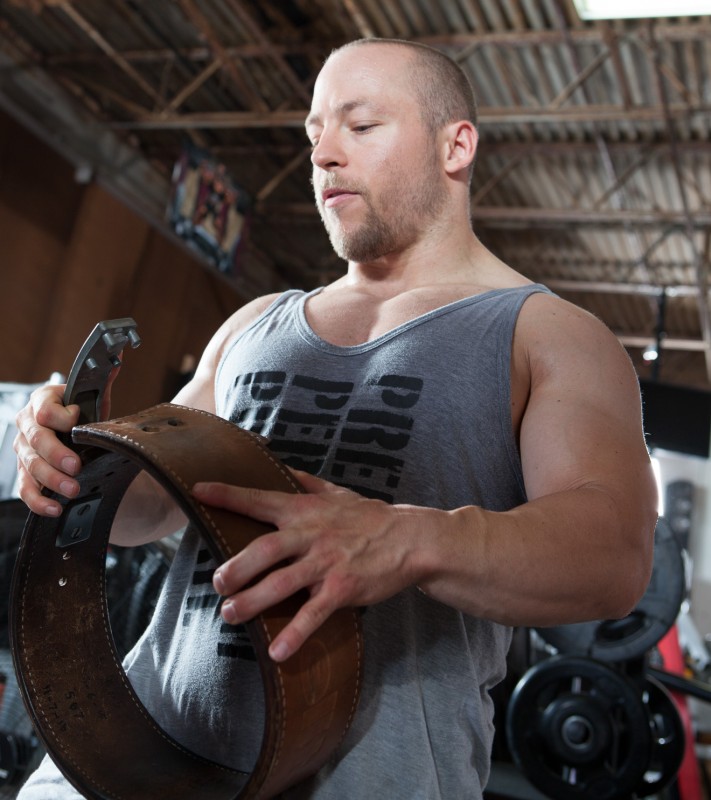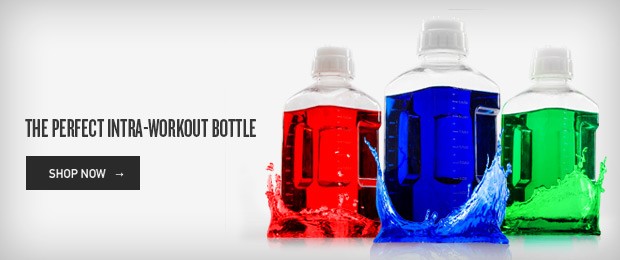
On the heels of stepping on stage at Canadian Bodybuilding Nationals, I have been taking a decidedly anti-bodybuilder’s approach. I am shifting gears from chasing sub-zero body fat levels and granite-like conditioning to focusing upon breathing life back into my body, stacking on new layers of muscle tissue, and improving the physique I have as a whole, in preparation for my next competition. While I won’t be stepping on stage again for a year and a half or so, in this game, now is when the work is done. This is the time that changes are made and improvements happen.
For many on their quest for unadulterated muscle gain, doing so means to avoid cardio at all costs, to perpetually jam carbs down your throat, to train as much as possible, as well as eating anything and everything, at any and every chance you get.
As improvement season heats up, I’ve been doing the exact opposite, and the results have been incredible. Instead of dialing back cardio to zero, I’ve made it an important piece of my improvement season plan.
RECENT: The Post-Contest Reality of Food
Rather than spend my days living in the kitchen, rolling around in carbs like the Cookie Monster, I’ve been fasting for 14 to 16 hours, three times per week, and going to bed hungry most nights.
While I used to operate under the assumption that a higher training volume meant more growth, thus training six days per week, I’ve altered my way of thinking. Now I am only training four times per week.
It’s been a fun (and rewarding) experiment to step outside of the traditional bodybuilding box. I've not only seen results in myself, but I’ve also been able to take what I’ve learned, and impart some of these principles into my clients to great effect.
Fasting for Muscle Growth
My not-so-secret fasting method has been to fast only on rest days (three days per week in my case), for 14 to 16 hours (or until ravenous).
I fell into this by accident. Once I realized what was happening, how great I was feeling, and the response from my body, I dialed in my method. Since then I have made it a regular “thing” on rest days.
Initially, this accidental fast would come on the heels of my one higher carb day (which typically involves a lot of sushi, gelato, and cookies). Waking up still “full” from the night before, I fell into spending the entire morning the next day writing, drinking coffee, and waiting until hunger really hit before eating.
Upon cluing into the fact that, time after time, I ended up fasting for 14 to 16 hours, and noticing that this higher carb day wasn’t impacting my conditioning, I kept it in the plan. On rest days (my fast days), I eat my last meal by 8 PM or 10 PM the night before, and don’t eat until around noon or 1 PM the following day.
While the benefits of fasting for fat loss and longevity are legion, the effects I’ve noticed most have been strength levels that are skyrocketing, high energy levels, digestive issues that are resolving themselves, conditioning that is improving, and the scale still going up by one to two pounds per week.
Talk about a happy, accidental discovery. If it ain’t broke, don’t fix it.
Improvement Season Cardio
Just enough fasted cardio to get the job done.
My improvement season cardio setup consists of two 25-minute interval sessions, alternating two minutes of high intensity with three minutes of moderate intensity. These sessions have been done fasted simply because I’m more likely to actually do cardio if I plan for it first thing in the morning.
As well, since I’m fasting on rest days—and aim to do my cardio on days I don’t lift so I still get in activity—the “magical” fasted cardio happens naturally. Aside from helping to keep body fat levels in check, I’m also including cardio for the purposes of improving my cardiovascular health (the more efficiently your body utilizes oxygen, the more effective everything becomes), to promote recovery (remember, you want to stimulate, not annihilate), and to get in daily activity (I spend much of my day seated in front my laptop, and it’s nice to break things up).
Best of all, it has been working. As far as I can tell, I’m not leaving any gains on the table, the scale is moving in the right direction, clothes are fitting tighter (in a good way), and my condition is staying about the same.
Cardio is not the muscle-building antichrist many make it out to be. Used wisely, it can help you get much more swoler, while working to keep body fat levels in check.

Chase Stimulation, Baby, Not Annihilation
There's a difference between your psychological need to train, and physiological need for adaptations to occur.
I will admit, I used to be of the mind that the more you can train, the better your results will be, and that to leave sessions on the table was to handcuff your results. I’ve since learned that my penchant for training six to seven days per week was much more about fulfilling a psychological desire to train than it was about anything else — especially since learning that you can effectively stimulate muscle growth with a much lower training volume, provided your training intensity is there.
Which is exactly where I’ve been placing my focus of late: fewer training sessions as a whole, but fighting tooth and nail to use heavier weights with better control in each session, then allowing time to recover, repair, and recharge.
With my current training split of chest an back, legs, arms and delts, and a second leg day, each muscle is getting one intense exposure per week (legs being the obvious exception here), allowing plenty of time for recovery while also placing emphasis on creating progressive overload, dipping down into high threshold strength-based work, and meshed with high volume fun within each session.
It’s been over five years since I’ve only trained four times per week, but it’s working like a charm. Growth is happening at an even, steady clip, and I’m not running myself into a state of under-recovery (at least not yet).
This entire approach is the very essence of “stimulate, don’t annihilate.” Or put another way, by Eugene Teo, “Pursue performance, not fatigue.”
Controlling Your Calories
This is a big shift, and one of the most profound departures I’ve made from a typical bodybuilder’s off-season plan (and even from my own approach last year).
I’m not eating everything in sight, I’m not eating food simply for the sake of it, and I’m not stuffing my face with carbs all day long or rolling around in a pile of cookie crumbs (save for one night per week). Matter of fact, I’m making a point of continuing to wake up hungry and go to bed hungry most days.
Here’s exactly how much I’ve been eating:
- 220 grams of protein on training and rest days
- 210 grams of carbs on training days, 120 grams on rest days, and 400 to 600 grams depending on my appetite once per week (courtesy of sushi, sweet potato, gnocchi, gelato, and cookies)
- 30 grams of fat on training days and 40 grams on rest days
All being told, the amount of carbs, protein, and fat on normal training and rest days above equate to 1800 to 2000 calories, which all things considered, is not a ton of food. But it is enough of a caloric surplus to push growth and not get fat.
Hey, I’ll take it.
The Final Reps
Fasting for Muscle Growth
So long as you’re still meeting your daily and weekly caloric needs for muscle growth, implementing fasting to some degree is only going to serve your improvement season or “bulk” well.
To name a few, the decreased inflammation, autophagy (destruction of old, broken down cells), and improved aerobic capacity will serve you well on your quest for quality muscle.
Improvement Season Cardio
Cardio is not the devil that so many muscle-building zealots make it out to be. Cardiovascular-based activities are an important part of how your body functions, and to neglect to improve your cardiovascular systems often leads to health issues, stalled results, and worse body composition.
Stimulate, Don’t Annihilate
I’ve said it before, and I’ll surely be saying it again. Setting out to annihilate yourself each time you set foot in the gym is a sure-fire way to beat up your body, and run yourself into the ground.
Sure, push hard when you’re feeling good, recovering well, stress is low, and you know you can handle the work. But, recognize when you need to dial things back and ease off the gas for a few days (that’s all it takes if you’re on top of things).
Control Your Calories
Hey, I love food, and I enjoy eating as much as the next guy. But food simply for the sake of food and chasing a rising scale weight is all but guaranteed to leave you with more body fat than needed.
Over and out.













I feel like my biggest failure this past offseason was eliminating cardio completely, it's nice to hear that you can grow while implementing a moderate amount into your program.
Jay - Thank you, Sir!